Pradhan Mantri Kisan Samman Nidhi: Eligibility, Registration and Benefits

Agriculture is not just an occupation in India; it is a way of life for millions. From small farmers cultivating half an acre to large landholders managing hundreds of acres with modern tools like tractors, the challenges of farming remain significant. Rising costs of inputs, unpredictable weather, and fluctuating market prices make farming a risky venture. To address these challenges, the Government of India has launched several welfare schemes, one of the most impactful being the Pradhan Mantri Kisan Samman Nidhi (PM-KISAN).
This direct income support program has touched the lives of millions of farmers since its launch in 2019. It provides small but steady financial assistance to landholding farmers, ensuring they can meet essential agricultural and domestic needs. In this comprehensive blog, we will discuss the objective, benefits, eligibility, exclusions, registration process, documents required, and wider impact of the PM-KISAN scheme. So let’s begin.
Objective of Pradhan Mantri Kisan Samman Nidhi
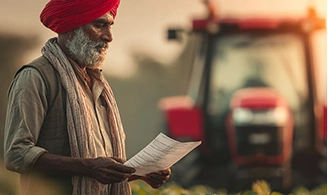
The primary goal of Pradhan Mantri Kisan Samman Nidhi is to supplement the financial needs of all landholding farmers’ families. Farming requires timely investments—purchasing seeds, fertilizers, pesticides, paying for irrigation, or even fueling and maintaining tractors and other farm machinery.
Many small farmers often rely on loans or moneylenders for these expenses, which increases their financial burden.
PM-KISAN helps address this gap by providing:
- ₹6000 per year to every eligible landholding farmer family.
- The amount is transferred in three equal installments of ₹2000, once every four months.
- Funds are sent directly into the farmers’ bank accounts through Direct Benefit Transfer (DBT).
This assured support enables farmers to:
- Maintain proper crop health.
- Achieve better yields.
- Ensure household requirements are not neglected during farming seasons.
The simplicity of this scheme—direct cash in hand without intermediaries—has made it one of the most effective farmer welfare initiatives in India.
Benefits of PM-KISAN

The benefits of Pradhan Mantri Kisan Samman Nidhi extend beyond the ₹6000 annual grant. Let’s explore them in detail:
1. Direct Financial Support
Farmers receive unconditional direct income support of ₹6000 annually. This money can be used flexibly based on their immediate needs, whether for buying fertilizers, seeds, or repairing a tractor.
2. Transparency through DBT
By using DBT, the scheme ensures that the full benefit reaches the farmer’s bank account without leakage, delays, or corruption.
3. Relief for Marginal Farmers
Small and marginal farmers owning less than 2 hectares of land form the majority of agricultural households. For them, even ₹2000 per installment provides much-needed relief during sowing or harvesting periods.
4. Encouragement to Continue Farming
Agriculture is often seen as a low-income profession. This scheme reassures farmers that the government stands with them, motivating them to continue farming and adopt better practices.
5. Boost to Rural Economy
The money given under PM-KISAN circulates in rural markets. Farmers spend it on agricultural inputs, tractor rentals, or daily household goods, thereby stimulating rural economic activity.
6. Foundation for Farm Mechanization
While ₹6000 is not sufficient to buy a tractor, it helps in fuel costs, repairs, or renting equipment. Over time, such support encourages farmers to think about mechanization and modern methods.
Eligibility Criteria for PM-KISAN
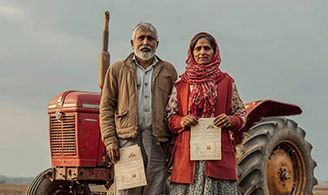
The scheme defines eligibility clearly to ensure the right beneficiaries are covered.
- Who is eligible for this scheme?
- All landholding farmers’ families with cultivable land in their names.
- A family here includes the husband, wife, and minor children.
- Key Points:
- Land ownership is mandatory. Tenant farmers or sharecroppers who do not own land are not eligible.
- The scheme is applicable across India. Whether you cultivate 1 acre with manual tools or 150 acres with tractors, you are eligible if the land is registered in your name.
Exclusions under PM-KISAN scheme

Not every landowner qualifies. To prevent misuse, certain categories of individuals are excluded:
- Institutional Landholders – Any land owned by institutions like government farms, trusts, or companies.
- High-Income Earners – Families with one or more members belonging to the following categories:
- Current or former constitutional post holders.
- Current or former Ministers, Members of Parliament, Members of State Assemblies/Councils, Mayors, and District Panchayat Chairpersons.
- Serving or retired officers/employees of Central or State Governments, PSUs, Autonomous bodies, or Local Bodies (except Class IV/Multi-Tasking Staff).
- Pensioners drawing more than ₹10,000 per month (except Class IV/MTS).
- Persons who paid Income Tax in the last assessment year.
- Professionals like doctors, engineers, lawyers, chartered accountants, and architects actively practicing their profession.
These exclusions make sure that the benefit goes to genuine farmers, not high-income individuals.
Documents Required for Registration
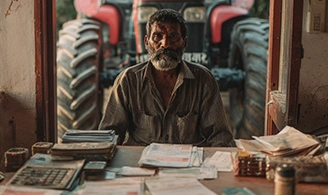
Farmers need only a few documents to register:
- Aadhaar Card – Mandatory for authentication.
- Landholding Papers – To prove ownership of cultivable land.
- Savings Bank Account Details – For DBT transfers.
Farmers must ensure that the name on their bank account matches the Aadhaar card to avoid payment failures.
Registration Process for PM-KISAN
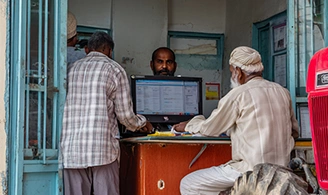
Farmers can apply through Common Service Centres (CSCs) or directly via the official PM-KISAN portal.
Registration at CSCs (Step-by-Step):
- Prerequisites
Keep Aadhaar card, landholding papers, and savings bank account details ready. - Details Entry
- CSC operator (Village Level Entrepreneur or VLE) enters details like state, district, block, village, Aadhaar number, beneficiary name, bank details, and date of birth.
- Land Details
- Survey number, khasra number, and land area are entered as per documents.
- Document Upload
Aadhaar, bank passbook, and landholding papers are uploaded for verification. - Self-Declaration
Farmer confirms eligibility by signing a self-declaration. - Application Fee Payment
Payment is made through CSC ID. - Check Beneficiary Status
Farmers can later check status using Aadhaar number.
Self-Registration on PM-KISAN Portal:

- Visit the PM-KISAN website.
- Click New Farmer Registration.
- Enter Aadhaar details and complete the online form.
- Submit details and track application status.
Checking Beneficiary Status

Registered farmers can check whether their installments are credited by:
- Visiting the official PM-KISAN portal.
- Entering Aadhaar number, account number, or mobile number.
- Viewing beneficiary status online.
This transparency helps farmers stay updated and resolve issues quickly.
What will happen if the beneficiary gives incorrect declaration for the implementation of the Scheme?
In case of incorrect declaration, the beneficiary shall be liable for recovery of transferred financial benefit and other penal actions as per law.
Wider Impact of PM-KISAN
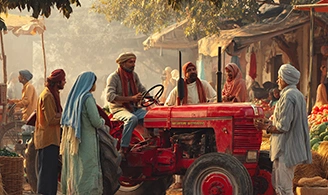
The scheme has had significant socio-economic effects across rural India.
- Reduction in Dependence on Credit
With timely installments, farmers rely less on money lenders. For instance, instead of borrowing for tractor fuel, they can use PM-KISAN funds.
- Support for Mechanization
Farmers often pool PM-KISAN money with their savings or loans to invest in equipment like small tractors, tillers, or irrigation pumps.
- Boost to Financial Inclusion
Millions of farmers now have active savings accounts, aligning with the Digital India and Jan Dhan Yojana initiatives.
- Safety Net for Farmers
Agriculture is unpredictable. PM-KISAN provides a safety net during crop failure, pest attack, or price crashes.
- Strengthening Rural Economy
When farmers spend their installments in local markets, small traders, input suppliers, and service providers also benefit.
Challenges in Implementation

Despite its success, certain challenges persist:
- Land Record Issues – Outdated or incomplete land records delay verification.
- Awareness Gaps – Some farmers are unaware of the scheme or do not know how to register.
- Exclusion Errors – Genuine farmers are sometimes excluded due to technical mismatches.
- Financial Adequacy – The ₹6000 annual support is valuable but insufficient for covering major farming costs like tractors or large machinery.
Suggestions for Improvement

- Update Land Records Digitally – Faster verification and fewer disputes.
- Awareness Campaigns – Door-to-door or through Krishi Kendras to reach every farmer.
- Increase Assistance – Considering rising costs, future revisions to increase support would be beneficial.
- Integration with Other Schemes – Linking PM-KISAN with crop insurance, tractor subsidy programs, and soil health schemes could multiply the benefits.
Case Study: How Farmers Use PM-KISAN
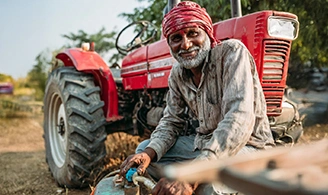
Consider a small farmer owning 2 acres of land:
- He receives ₹2000 just before sowing season.
- The money is spent on seeds and fertilizer.
- The next installment helps him buy diesel for his tractor or rent machinery.
- The final installment is often used for domestic needs or to repay small debts.
This cycle shows how PM-KISAN acts as a timely support system throughout the year.
Future of PM-KISAN

As farming modernizes, schemes like PM-KISAN will continue to evolve. Possible future directions include:
- Higher annual assistance.
- Special installments during droughts or floods.
- Integration with farm mechanization schemes to help farmers buy tractors, harvesters, or drip irrigation systems.
Conclusion
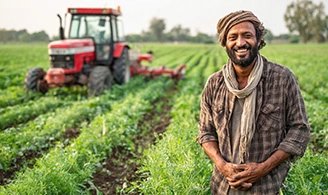
- The Pradhan Mantri Kisan Samman Nidhi scheme is a landmark step in farmer welfare. By providing ₹6000 annually through direct transfers, it ensures farmers have steady financial support for agriculture and household needs.
- For small farmers, this money often means the difference between taking a loan or continuing farming independently. For larger farmers, it complements their investments in modern tools like tractors and machinery.
- While challenges remain, PM-KISAN has already transformed the financial landscape of rural India. With improved awareness, better land record management, and possible enhancement of benefits, it can become the backbone of farmer welfare in the country.
- Ultimately, the scheme not only helps farmers but also strengthens India’s agricultural economy, ensuring food security for the nation.
















